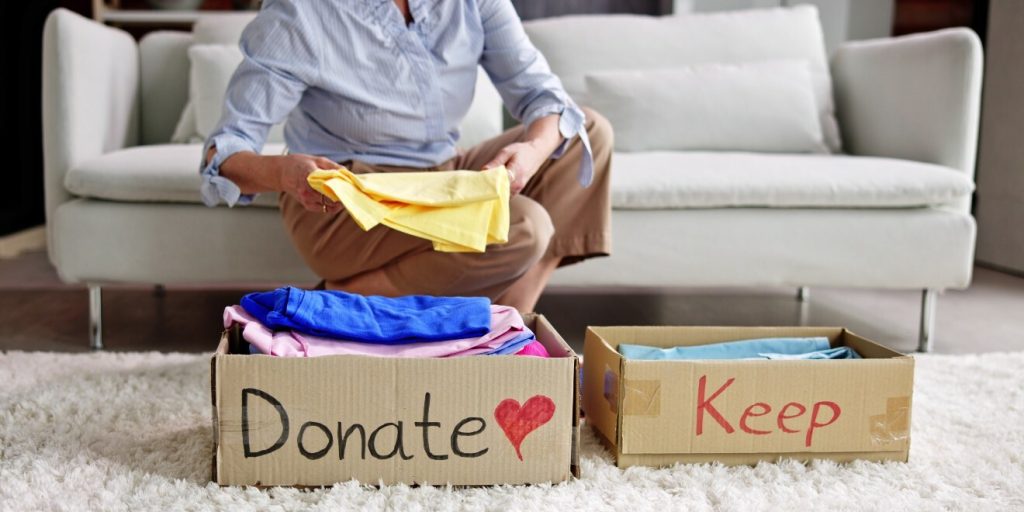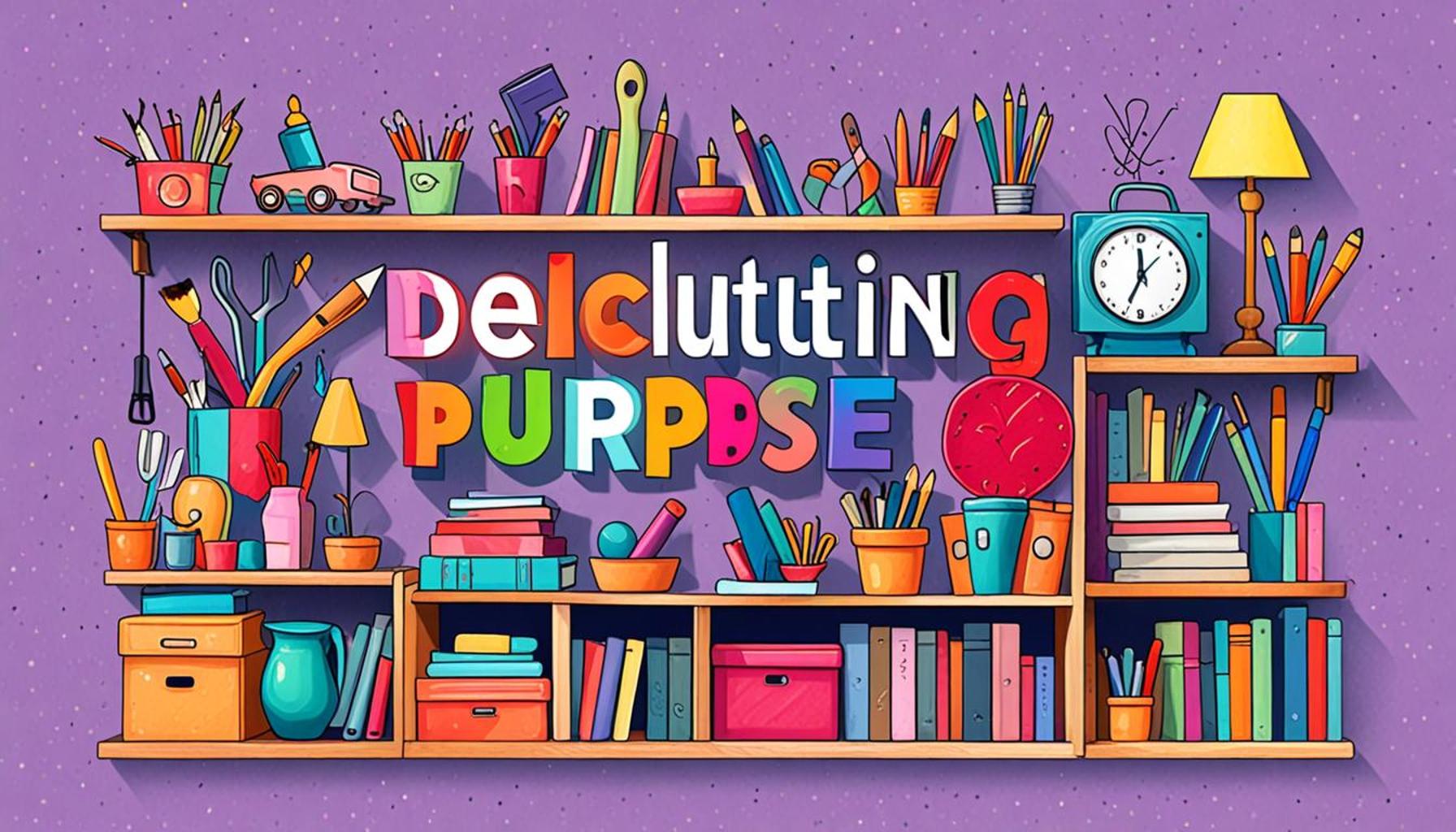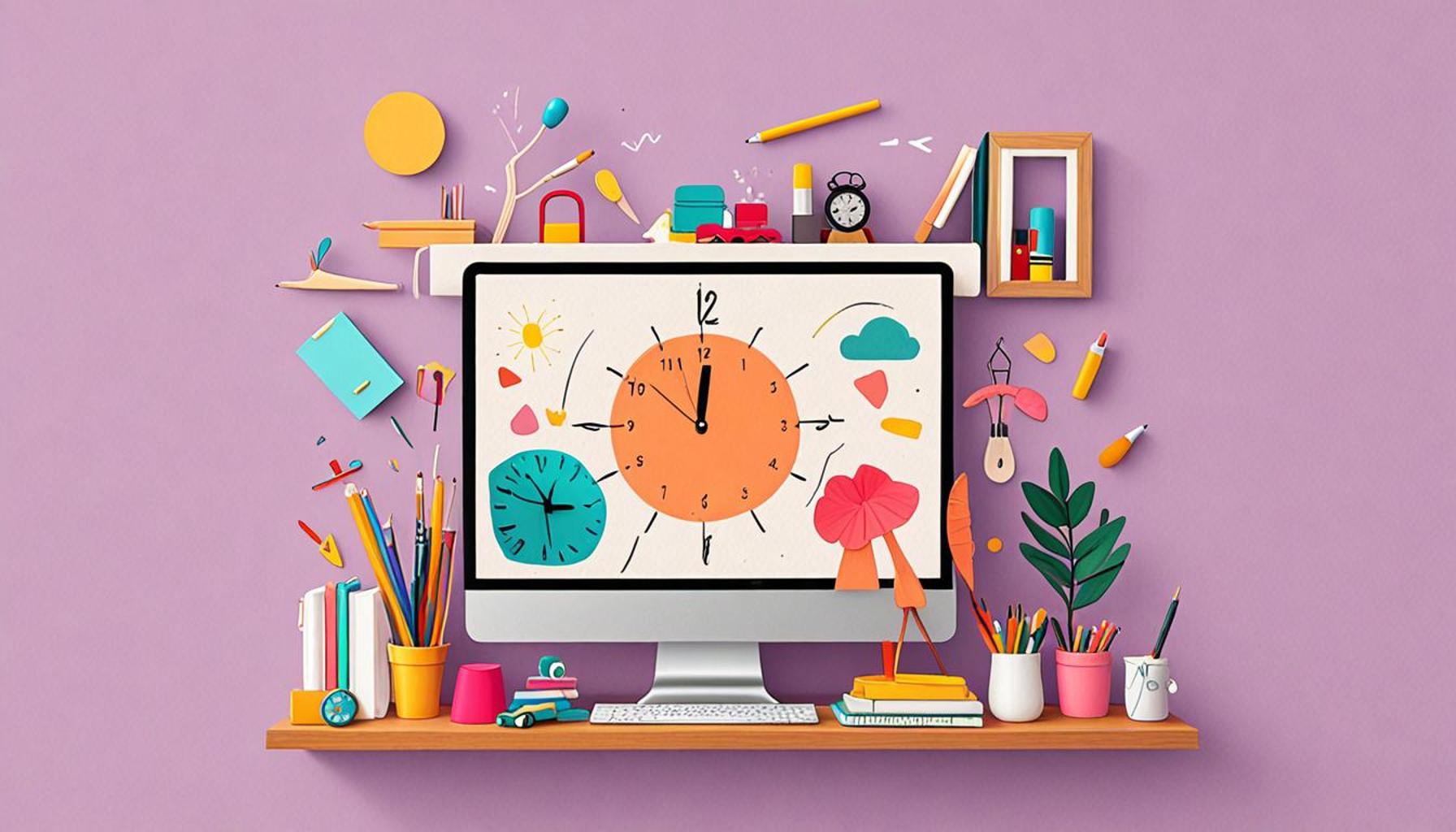Decluttering for Families: Techniques to Create an Organized Home While Involving Everyone

Creating a Harmonious Living Space
In today’s fast-paced world, families often find themselves overwhelmed by clutter. A disorganized home can lead to increased stress and decreased productivity, making it crucial to adopt effective decluttering techniques that involve everyone in the household. Clutter can manifest in numerous ways—whether it’s stacks of unfiled paperwork, overflowing closets, or scattered toys throughout the living room. This disarray can create an environment that feels chaotic and stifling.
Consider the myriad benefits of a decluttered environment:
- Reduced stress: A tidy space promotes peace and relaxation. Studies have shown that individuals living in organized spaces report lower levels of anxiety and greater emotional well-being.
- Improved efficiency: Finding items becomes easier, saving valuable time. Think about how much time is wasted looking for misplaced items—a decluttered space helps streamline routine tasks.
- Enhanced creativity: Less mess can spark new ideas and projects. With a serene backdrop, creativity often flourishes, encouraging hobbies and new pursuits.
Engaging the entire family in the decluttering process not only fosters teamwork but also helps instill responsibility in children. Learning to take care of their belongings is a crucial life skill that can remain with them well into adulthood. Implementing fun strategies, such as setting a timer for “5-minute tidy-ups” or turning decluttering into a friendly competition, can transform a daunting task into an enjoyable family activity.
For successful decluttering, consider the following techniques:
- The ‘One In, One Out’ Rule: For every new item brought into the home, let go of an existing item. This principle not only curbs the accumulation of unused items but also encourages mindful purchasing behaviors.
- Regular Decluttering Sessions: Schedule weekly or monthly family clean-up days to maintain an organized space. This habit ensures that clutter doesn’t have a chance to build up and instills a routine that everyone can follow.
- Involve Kids: Allow children to decide what they want to keep, making them feel part of the process. Providing them with ownership over their space increases their attachment to the organization efforts and understanding of responsible living.
As you navigate the journey of organizing your home, remember that everyone’s input is valuable. From sorting toys to organizing the pantry, each task can be a family bonding experience. Embrace the challenge and turn your home into a haven of order. A well-organized space not only enhances your home’s aesthetics but also contributes to day-to-day efficiency, improving your overall quality of life. Consider documenting your decluttering journey through photos or a journal—these records will serve as motivation and reminders of the positive changes you’ve made over time.

DISCOVER MORE: Click here to boost your productivity
Effective Strategies for Family Involvement
Embarking on the journey to an organized home is not merely about tossing out unwanted items—it’s about involving every member of the family in the decluttering process. When kids see their parents actively participating in maintaining a tidy environment, they are more likely to engage and take ownership of their surroundings. To ensure that decluttering is not a daunting task but rather an enjoyable family project, consider implementing these practical techniques:
- Divide and Conquer: Tackle specific rooms or areas one at a time. Assign different family members to different spaces based on their age and responsibility level. For example, younger children can help sort toys while older kids can assist with clothes or books. This method allows everyone to contribute to the overall organization without feeling overwhelmed.
- Set Clear Goals: Before diving into decluttering, discuss with your family what you hope to achieve. Whether it’s creating a more serene living room or a clutter-free kitchen, establishing clear goals will provide a sense of direction. Make these goals tangible; for instance, aim to donate a certain number of items each week to foster a spirit of giving.
- Labeling and Categorizing: Invest in labels for bins, boxes, and shelves. Involve everyone in the process by having them help decide how to categorize items. Color coding can also be an effective method—designate different colors for different family members or types of items. Labeling not only keeps things organized but also makes it easier for family members to find their belongings and return them to the right place.
- Make it Fun: Turn decluttering into a game. Use a timer to see how many items each family member can organize in five minutes. Create a reward system where points can be earned for every item decluttered, redeemable for treats or family outings. Making decluttering enjoyable will encourage kids to participate actively.
Moreover, teaching children the value of experiences over possessions is a vital lesson in today’s consumer-driven society. Discuss with them how memories and relationships often outweigh physical items. Encourage them to choose meaningful belongings while understanding that it’s okay to let go of things that no longer serve a purpose in their lives. This approach not only assists in keeping the clutter at bay but also nurtures their emotional and social development.
Consider documenting each step of your family’s decluttering adventure. As you sort through belongings, take pictures or keep a journal highlighting your progress. This activity can foster a sense of accomplishment and motivate your family to continue working toward an organized home. Encouraging collaborative reflection on the decluttering process can also ignite discussions about what everyone values and why they chose to keep specific items.
With these strategies in mind, families can transform the process of decluttering into a nurturing and rewarding experience that benefits everyone involved. Building routines around organization not only enhances the physical space but also nurtures a sense of teamwork and responsibility among family members.
Engaging the Whole Family in the Decluttering Process
Creating an organized home is not just about throwing things away; it’s about fostering a sense of responsibility and teamwork among all family members. Involving every member, from toddlers to teens, can make the decluttering process more effective and enjoyable. One effective technique is to implement a “family clean-up day” where each person plays a role tailored to their age and abilities. This can include sorting through toys, organizing their personal spaces, or even selecting items to donate.Another strategy is to utilize the “Four-Box Method”, where each person has four labeled boxes: Keep, Donate, Trash, and Relocate. This method not only simplifies the decision-making process but also teaches children about the value of their belongings and the importance of sharing. Discussions around decluttering can also open up avenues for teaching life skills. For instance, asking children to define what “clutter” means to them allows for a deeper understanding of what it signifies in terms of space and mental clarity. Families may explore concepts like minimalism, emphasizing that less can often mean more — more freedom, more time, and more peace of mind.Establishing regular decluttering habits, such as seasonal clean-outs or monthly organization tasks, can keep residences tidy and organized. Setting up a reward system for successful decluttering sessions can also motivate family members to participate actively, turning what might be seen as a chore into a fun and collaborative event. Through collective effort and strategic planning, families not only enhance their living spaces but also strengthen bonds and instill lifelong organizational habits in their children.
| Category 1 | Category 2 |
|---|---|
| Engagement Techniques | Methods to involve each family member in decluttering. |
| Team Activities | Strategies like family clean-up days enhance collaboration. |
In conclusion, direct involvement in the decluttering process creates a shared vision of an organized home, ultimately leading to not just a cleaner physical space but also stronger family dynamics and improved emotional wellbeing.
DISCOVER MORE: Click here to learn about creating multifunctional spaces
Building Lasting Habits for a Clutter-Free Home
Creating an organized home is not a one-time event but a process of cultivating lifelong habits. To sustain the momentum generated during the initial decluttering effort, families can implement a series of simple yet effective practices that promote ongoing organization. Here are some strategies to help families maintain their decluttered spaces:
- Establish a ‘One In, One Out’ Rule: Encourage family members to commit to a policy where for every new item brought into the home, an existing item must be removed. This principle teaches children to think critically about their possessions and assists in controlling clutter. For example, if a child receives a new toy, they should consider donating an old one, fostering a sense of responsibility for their belongings.
- Designate a Decluttering Day: Set aside a recurring time each month or season specifically for decluttering. Involving the entire family in these regular check-ins can help maintain order and reduce the accumulation of unnecessary items. Use this time to evaluate, organize, and decide what should be kept or donated based on the family’s evolving needs.
- Create a ‘Clutter Spot’: Allocate a specific area in your home for items that may not have a designated space yet. This enables family members to place items temporarily without creating chaos. However, be sure to review this area regularly, ensuring items find their rightful place or are removed altogether after a certain period.
- Utilize Storage Solutions: Invest in multifunctional furniture that provides storage options, such as ottomans with compartments or beds with drawers. Involving children in the selection process can make them feel more invested in keeping their items organized. Use bins and baskets for easy access to toys and games while maintaining a tidy appearance.
As technology continues to integrate into everyday life, families can also utilize digital tools for organization. Apps and online resources can help families track belongings and manage what comes in and out of the home. Consider using a family calendar or inventory app that allows everyone to contribute in real time, creating a collective approach to the organization.
Teaching Responsibility and Decision-Making: Instilling the idea of personal responsibility in children empowers them to make informed choices about their belongings. Provide opportunities for kids to decide which items they truly value and which may not hold the same importance. This practice nurtures autonomy and significantly reduces attachment to material items that can contribute to clutter.
Furthermore, foster an environment of open dialogue about organization. Encourage family members to express their sentiments about possessions and engage in discussions regarding memories attached to items. This approach not only helps when sorting through belongings but also builds emotional intelligence as family members learn how to prioritize and value different aspects of their lives.
Finally, consider the psychological benefits of decluttering. Research suggests that a tidy living space can reduce stress and improve overall well-being. Families can discuss the positive impacts of an organized home on their emotions and mental health, reinforcing the importance of these efforts. By highlighting the benefits associated with decluttering and organized living, families can cultivate a harmonious atmosphere that everyone actively contributes to and enjoys.
DISCOVER MORE: Click here to learn about intentional living and sustainability
Conclusion: Embracing a Collective Journey Toward Organization
Decluttering for families is not merely a series of tasks to complete but an ongoing journey toward a harmonious and organized home. By adopting techniques that involve every family member, you’re not just cleaning surfaces but instilling valuable life skills and shared responsibilities that transform clutter-control into a collective effort. Through establishing effective practices—such as the ‘One In, One Out’ rule, designating regular decluttering days, and creating clutter spots—you empower each family member to partake in the upkeep of their shared environment.
Moreover, embracing digital tools fosters collaboration, allowing families to manage belongings seamlessly in today’s tech-centric world. As children learn to make informed decisions about their possessions, they develop independence and emotional maturity, understanding that a home is as much about the memories attached to items as it is about the items themselves. Open discussions about organization build emotional connections and sensitize family members to the impacts of clutter on mental well-being.
Ultimately, the process of decluttering is a holistic approach that can enhance not only the physical state of the home but also the emotional atmosphere within it. Families who engage in this inclusive process often experience lower stress levels and improved overall satisfaction. By committing to these strategies and fostering a clutter-free mindset, you can cultivate an organized space where everyone thrives. The benefits of an orderly living environment extend beyond just aesthetics—they contribute significantly to a balanced and joyful family life. So take a step forward today, involve everyone in the decluttering process, and witness the transformation unfold.


